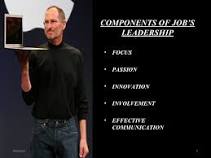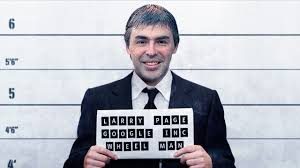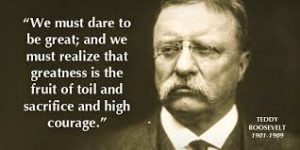Interpret Leadership Traits and Behavioral Theory
Abstract
In this paper the author discusses three leadership theories: autocratic, democratic, and Laissez-faire. He presents a case study based upon his personal experience owning and leading a carpentry company using autocratic and Laissez-faire leadership styles. He uses Shackleton’s Antarctic expedition as a call to the adventure of leadership.
Keywords
Leadership Theory, Autocratic Leadership, Democratic Leadership, Laissez-faire Leadership. Shackleton,
I cannot get away from the lure of adventure this Shackleton advertisement invokes:
“”MEN WANTED: FOR HAZARDOUS JOURNEY. SMALL WAGES, BITTER COLD, LONG MONTHS OF COMPLETE DARKNESS, CONSTANT DANGER, SAFE RETURN DOUBTFUL. HONOUR AND RECOGNITION IN CASE OF SUCCESS. SIR ERNEST SHACKLETON”’ (http://www.pbs.org/wgbh/nova/shackleton/1914/team.html)
I still remember in Ottawa, Ontario Canada attending IMAX theatre at the Museum of Civilization in Gatineau, Quebec to see the showing of ‘Shackleton’s Antarctic Adventure’ during the season when we were pioneering Door of Faith Church in Ottawa. I left the theatre inspired, invigorated, and amazed at how the crew of 28 adventurers on the Endurance survived over 400 days aboard Antarctic ice.
As an entrepreneur and pioneer of many ventures over the past 25 years, Shackleton’s expedition reminds me of some of the many adventures I and my family have embarked upon, as the son of a naval officer and former commercial diver and underwater welder, this spirit of adventure is in my blood.
This paper will look at three leadership theories as applied in the creation and growth of Grace Interior Trim, during the period of from 2005-2012.
“While scholars have identified many leadership theories, a recent review of the leadership literature identified 66 separate theories in the published work since 2000 (Dinh, Lord, Gardner, Meuser, Liden, & Hu, 2014)” for the purposes of this writing we will define and investigate only three: autocratic, democratic, and laissez-faire.
Autocratic Leadership
Eric Gill of St. Thomas University offers the follow definition that appears succinct:
(Gill, E, 2014) “Autocratic leadership definition
Autocratic derives from the words auto (Greek for self) and cratic, which implies rule.
Autocratic leaders often view themselves like automobile engines that drive people under their tutelage or command, whether it’s a mayor of a large city, a company CEO or an agency director.
It may seem incongruous to think of autocratic leaders as self-driven. But if their role in business, government or other organizations is to drive others to perform at their best and accomplish tasks without making mistakes, then the description is appropriate.”
Example: Steve Jobs: According to Henson (2011) “Steve Jobs was far from perfect. I’d like to comment in particular on his leadership and management style. It is well-known that Steve Jobs could be arrogant, dictatorial, and mean-spirited.

Hill (2016) gives many examples of autocratic leadership, three of which are:
John Chambers: The chairman of Cisco Systems, Chambers assumed the CEO position of a relatively unknown Silicon Valley company that made telephone switches. After 25 years, Cisco evolved into an estimated $47 billion company that dominates the networking industry. Today, Cisco stock is one of a handful of bellwether holdings used to measure the U.S. economy. This was accomplished under Chambers’ autocratic leadership in which no detail was purportedly too small for his attention.
Ridley Scott: In an industry where box-office receipts measure success, Scott remains one of the few Hollywood directors whose films are profitable and critically acclaimed. A short list of his films includes “Blade Runner,” “Alien,” “Thelma & Louise,” “White Squall,” “Gladiator,” “American Gangster,” “Prometheus” and his recent “Exodus: Gods and Kings.” Scott, who began his career as a graphic designer, has a reputation as a perfectionist. Actors are expected to know their lines, positions and cues before the camera starts rolling.
Tony La Russa: The retired manager of the Oakland Athletics, St. Louis Cardinals and Chicago White Sox, La Russa is one of Major League Baseball’s winningest coaches. La Russa, who earned a law degree and was admitted to the Florida state bar, is ranked third in MLB coaching history with 2,728 victories. La Russa won three world championships, six league championships and 12 division titles during his 33 seasons coaching baseball. On the field, La Russa came across as laid-back, but he was constantly strategizing and studying players.
Democratic/participative leadership
Again, I refer to the work of Eric Gill of Saint Thomas University for Democratic/participative leadership definition (Gill, 2016)
It’s difficult to imagine democratic leaders accomplishing their goals without direct participation from others. Participation is key to all successful democratic enterprises. This includes:
- Attentive constituents in a congressional district
- Concerned parents of students at a school
- Active members from a nonprofit organization
- Engaged employees at a prospering company
What is the definition of democratic/participative leadership?
One of the clearest definitions of democratic leadership comes from John Gastil. His 1994 article, “A Definition and Illustration of Democratic Leadership,” (Gastil, 1994) for the Human Relations journal remains relevant to private industry and the free market.
Gastil, a professor at Penn State University, has written extensively about jury selection and democratic participation in the deliberations process. His succinct definition of democratic leadership explains that it is conceptually distinct from positions of authority.
Gastil’s definition of democratic leadership:
“Distributing responsibility among the membership, empowering group members, and aiding the group’s decision-making process”
Hill, (2016) then gives us several examples of leaders that exemplify the democratic/participative leadership theory:
“Examples of companies where democratic/participative leadership works:
- Google: Founders Sergey Brin and Larry Page developed their Internet search engine while pursuing their doctorates at Stanford. After obtaining initial financing, they did something unusual. Brin and Page followed the advice of experienced entrepreneurs and hired Eric Schmidt to jump-start their company. Incorporating a blend of autocratic, laissez-faire and democratic leadership styles, the Novell and Sun executive brought experience into Google’s dugout. The three immediately began scouting experienced talent to set up democratic/participative teams. Today, Google remains relatively democratic in its approach to product development under CEO Page.

- Genentech: A pioneer in the discovery and development of restriction enzymes to develop biological drugs, Genentech was started by Robert Swanson and Herbert Boyer. They faced competition for financial resources and talent when they launched the company in 1976. Recombinant DNA technology was a mystery to all but a few forward-looking biologists and chemists. The key to Genentech’s success was instilling democratic/participative leadership values to attract those scientists. Although it’s now owned by Roche, Genentech remains on the leading edge by blending democratic R&D with autocratic manufacturing leadership styles.
- Mayo Clinic: A nonprofit organization with a reputation as one of the most cutting-edge healthcare research facilities in the world, the Mayo Clinic thrives on democratic/participative leadership values. Founded by Dr. William Mayo and his family, the hospital, healthcare and research facility attracts some of the most brilliant minds in the medical field because it gives them opportunities to work collaboratively among peers on democratic teams. Although the processes required in the medical research industry often call for an extremely autocratic approach, healthcare organizations like the Mayo Clinic cannot succeed without democratic/participative leaders.
- Amazon.com: When it launched, Amazon was known for selling books. The company prospered by embracing all three of Lewin’s leadership models. It started as a laissez-faire company, with Jeff Bezos as final arbitrator of all key decisions. He recruited a lot of veteran computer programmers from nearby software companies and quickly implemented a democratic/participative leadership model. Today, Amazon sells everything imaginable, including cloud services and big data security storage. Amazon is necessarily autocratic because of its commitment to timely customer service. At its core, however, the company retains its democratic values among C-suite executives, division heads and project directors.
Laissez-faire leadership:
Again, Hill (2016) gives us a succinct definition of this leadership theory
The Merriam-Webster Dictionary defines laissez-faire leadership as:
“A philosophy or practice characterized by a usually deliberate abstention from direction or interference, especially with individual freedom of choice and action.”
This self-rule style empowers individuals, groups or teams to make decisions. Critics of this hands-off leadership style contend it is risky to universally delegate decision-making responsibility to staff members. Groups and teams do not have the power to make far-reaching strategic decisions, but laissez-faire leaders allow individuals or teams to decide how they will complete their work.
Examples of laissez-faire leadership
People don’t often associate laissez-faire leadership with government. However, there are many historic examples of large-scale endeavors led by political leaders that required delegating authority and decision-making to experts. Most of these examples entailed massive infrastructure projects that would not have been successful without some form of laissez-faire leadership.
Examples of large-scale projects led by a laissez-faire leadership style:
- Transcontinental Railroad: No single individual was responsible for building the North American railway system, but it serves as an example of laissez-faire leadership in action. The combination of presidential directives, congressional cooperation and private enterprise coming together during the second half of the 19th century to lay thousands of miles of track from coast to coast and across U.S. territories remains unprecedented.
- Panama Canal: Led by President Theodore Roosevelt, the Panama Canal was one of the most ambitious projects in history when construction began in 1904. Although it was beset by accidents and geographic challenges, completion of the Panama Canal in 1914 was an engineering marvel. It could not have been accomplished without Roosevelt’s willingness to delegate authority to experts.

- Hoover Dam: The Hoover Dam involved three U.S. presidents and was built by hundreds of leaders. Initiated in the early 1920s by Secretary of Commerce Herbert Hoover under President Calvin Coolidge, the project was finished the following decade under President Franklin D. Roosevelt. Although he is rarely associated with laissez-faire leadership, Roosevelt could not have completed the many infrastructure projects built during his presidency had he not delegated authority to others.
- Interstate Highway System: Recognizing the importance of the automobile and trucking industries to America’s future, President Dwight D. Eisenhower led the charge to build a state-of-the-art highway system. The massive public works project provided jobs for tens of thousands of Americans and would not have been possible without Eisenhower’s hands-off approach. His decision to delegate authority to civil engineers, contractors and specialized workers is a prime example of laissez-faire leadership.
Case Study – Grace Interior Trim LLC (https://www.facebook.com/Grace-Interior-Trim-LLC-244907400682/)
From 2005 – 2012 my partner Tom Brewster and I created and built a finish carpentry and millwork company that grew from a sole-proprietorship, through to an ‘S’ corporation, and that is presently a dormant LLC. We began as ‘Two chucks in a truck’ having our wives drop us off each morning in their mini-vans to unload tools then picking us up at night. Long grueling days of sweat and hard work yielded almost enough to feed our families that first year (personal income of $17,500 each), to employing 23 people 8 years later, with a gross revenue of 1.1 million. We closed the company in 2012, to pursue other endeavors. Through the years there were many tests and lessons, but the one I feel led to share was what we now laughingly call ‘the royal butt-kiss’. Here’s how it happened. In the beginning, Tom and I did all the work, completing he contracts, submitting estimates, ordering materials, fixing or buying tools, and invoicing and collecting checks. Tom is the master craftsman of the two of us, so on the jobsites, I was his apprentice as he created one of a kind works woodworking projects. Yet, after building a spiral log staircase morticed into a tree with an antique phone booth inside a multi-million-dollar estate, we were suddenly overwhelmed with requests for our services. We needed a crew, and we brought our simple journeyman’s union rules to the principals that would form and create our company for years to come: 1. No alcohol/drug use on site 2. No stealing (tools, materials, time) 3. Show up (No show, no call, strike 3 you are out). With this simple strategy and incredible passion and zeal, we negotiated several large contracts, then hired and fired over 30 carpenters for violation of these three rules in just over a month!
This set the stage for ‘The Royal Butt-kiss”. Suddenly, we could not possibly attempt to do all the work, for we now had 7-8 incredibly motivated and gifted carpenters and apprentices working for us, and each week we faced what we affectionately named “The Payroll Monster’. People actually expected a paycheck for working for us, no matter how well or poorly they performed in a contract (a new concept for us, when we did well, we made money, if we messed up, we lost money), and naturally, responsibilities and roles had to quickly adapt and change. It was decided that Tom would manage the jobs and keep everyone motivated and running, and solve complex carpentry problems on multiple jobsites, while I would run all over the state, meeting potential clients, submitting estimates (with his approval), ordering materials, submitting invoices, collecting checks and making bank deposits, and writing paychecks. Eventually this monster employed 23 people and required 5-7 projects/week to feed. It was a dead run from sun-up until well after sun down, and the pace eventually caused me to experience a mini-stroke in 2009.
Yet, I digress. I noticed over a period of months, that whenever I showed up on a jobsite, people would become animated, and buddy up to me or Tom, and for a short while it felt good to be ‘appreciated’. I joked one day with Tom about this, and he wisely said: “It’s not about us, the guys buddy up to us, because they want a raise, and when we give it to them, you and I have to suffer to produce the money it requires to pay them.” He hit the nail on the head (excuse the pun for a carpentry company), so in our weekly business meeting (Always on Friday night at 6), we discussed what created this dynamic, and what we could do to eliminate this problem, while always paying people fairly. We spoke with mentors, SCORE (Service Corps of Retired Executives) to discover if what we were paying was just and fair, and discovered we were paying many of our guys $3-5 hour above the state average in our trade. We then had to figure out how to correct this, so the company could grow.
We created an objective pay scale based upon skill level, level of responsibility and time with the company, that ranged from $10-$20 hour. If someone was to make more than $20/hour it had to be through profit sharing, sub-contracting, or on piece work, with equal risk for equal reward.
One Friday, when everyone was together picking up paychecks, we included this pay-scale in everyone’s pay envelope and posted it on the wall in the office by the door so everyone could see it every week and be reminded how we paid. Simple, well-thought out solution to a difficult problem it seemed, but implementation was much more difficult. Why? It is almost impossible to revoke a pay-raise after you have given it, and some of our great schmoozers were clearly been overpaid for what they produced, and some of our top producers were being underpaid. Over the next month or so, I was stuck with the miserable task of quietly taking each of the guys out to lunch to discuss with each of them privately how they were doing and either give raises (with money we did not think we had), or strong correction to the guys who were being overpaid. I gave them each three months’ to either qualify themselves for what they were being paid, or I would have to let them go.
An amazing thing happened!
Productivity, therefore profitability dramatically increased, as did moral. The guys themselves upheld the standards set, and honestly helped each other improve their skill sets to qualify for pay raises, and I was able to give them. Life became complex again though in my relationships with my lead guys on the four crews as to how to adequately reward them for performing well, but that’s another story for another day.
As the leadership theories studied were applied to this case study, clearly autocratic leadership (obey the company rules or you are fired) and laissez-faire leadership are readily identified in the actual development of an objective pay scale. (we solicited objective outside counsel and heard from the guys we worked with every day). Only after this was done could we begin to move towards true democratic or participatory leadership. As the company grew and developed four separate and distinct crews under very qualified lead men, meetings requesting input from administrative, sales, and production people to brainstorm how to not just survive but thrive in the highly competitive environment of residential and commercial carpentry and millwork began, soliciting true participation from the whole leadership team.
References
- Zaccaro, S. J. (2007). Trait-based perspectives of leadership. American Psychologist, 62(1), 6-16. doi:10.1037/0003-066X.62.1.6
- Henson, R (2011), The Leadership of Steve Jobs, http://www.business.rutgers.edu/business-insights/leadership-steve-jobs
- Mouser, J. D., Gardner, W. L., Dinh, J. E., Hu, J., Liden, R. C., & Lord, R. G. (2016). A Network Analysis of Leadership Theory: The Infancy of Integration, Journal of Management. 42 No. 5, p2, DOI: 10.1177/0149206316647099
- Gill, E, 2014, Leadership is Learned: What is Autocratic Leadership? How Procedures Can Improve Efficiency, https://online.stu.edu/autocratic-leadership/#definition
- Gill, E, (2016). Leadership is Learned: What is Democratic/Participative Leadership? How Collaboration Can Boost Morale https://online.stu.edu/democratic-participative-leadership/#definition
- Gastil, J, 1994, Human Relations Journal, Vol 47, Number 8, http://jgastil.la.psu.edu/pdfs/DefinitionDemocraticLeadership.pdf


